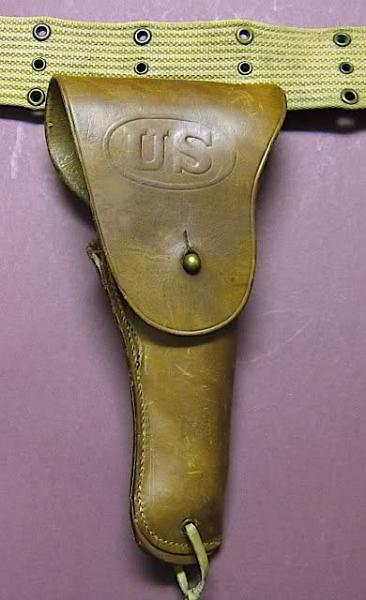-
Legacy Member


Well Johnny, it is obvious that we will not convince each other since this is the second time you have brought your Father's knife sheath into a discussion of neatsfoot oil. Let me say that there too many "unknowns" here:
(1) What kind of neatsfoot oil did your Dad use? Pure neatsfoot oil or neatsfoot oil compound? There is a BIG difference in the two.
(2) How often did he apply the oil and how much did he apply each time? Most people think "If a little is good, more is better" when it comes to neatsfoot oil. Not saying your Dad did this, but some people will fill a coffee can with oil and drop the scabbard in it to sit over night, effectively drowning the leather. Too much oil, whether pure oil or one of the compounds containing mineral oil, can severely darken the leather, no doubt about it, it's the nature of the beast. Heavily used working horse harness needs oiling once every three to five years - that's on a Mennonite farm where the horses are the only propulsion for farm equipment. A leather knife scabbard, even one used regularly like the small one in your photo, only needs oil once every 5 to 10 years. In 37 years, this scabbard should have been lightly oiled 4 to 6 times. I have a feeling that this one received more oil than that. True?
(3) How much use did the two scabbards get? Obviously the larger knife, while carried a little, is a "safe queen" compared to the smaller one. The smaller knife has seen more carry and exposure to sunlight, dirt and abrasion common to a well used leather item. When you say that "the leather is coming apart", what do you mean? If the leather is cracking, splitting, hardening or flaking, those are indications of too much oil or some other treatment. Is the stitching failing? That indicates the use of a neatsfoot oil compound. Mineral oil, used to cut neatsfoot oil to make the compound will damage linen thread, pure neatsfoot oil will not. Over oiling (with anything) causes leather cells to swell and burst causing the leather to fail, especially under the stitching where the holes made by the awl act like perforations making failure certain.
Not being able to hold the knives in my hands, it is hard to make a completely accurate assessment of their condition but I do think that, based on over 30 years of working with leather with hide to finished product I have made what I consider to be a pretty accurate judgment of their condition. And please understand, I am not saying anything disrespectful about your father, he obviously liked this knife, used it a lot and took good care of it, carrying it often and taking what can be considered good care of it and it's sheath. It is obvious that it has been well used where the larger 1960 knife and especially it's sheath show much less use. Too bad it was treated with Pecards, it would have looked better and retained it's original color better if left alone, it probably didn't need any treatment.
Last edited by gew8805; 10-08-2010 at 02:30 PM.
-
Thank You to gew8805 For This Useful Post:
-
10-08-2010 02:27 PM
# ADS
Friends and Sponsors

-
FREE MEMBER
NO Posting or PM's Allowed

I would love to be able to ask my dad, but he died 12 years ago. The only things I do know is that he did use Neatsfoot oil on the sheath and it is disintegrating today. I'm sure he didn't have your expertise in applying the Neatsfoot oil in just the exact amount, but he thought he was doing the right thing.
Here is one you haven't seen before. I bought a complete pistol rig about 15 years ago, and at the time the 1918 dated G&K holster was still nice but very dry. It has had regular Pecard maintenance and to the best of my knowledge had not started the inevitable disintegration you forecast for leather treated with Pecards.

-
-
FREE MEMBER
NO Posting or PM's Allowed

The thing is gentle men that leather even after it has been tanned is still a living thing and needs to be fed.
Depending on the item ie: a rifle bucket a saddle or a bayonet scabbard all require different types of treatment. By useing a petroleum based product you run the risk of destroying what suppleness there is in the leather and rotting of the stitching, or life for that matter. You are far better off useing a natural based preservative such as lanolin or lanolin based products that actually feed the leather or a polish which has a high wax content (corduba wax being of the better type), this will preserve a lot longer and not destroy the natural patina of the leather. The military manuals of ww1 describe a presevative based on cod liver oil as a base ingredient for saddles, all the time ive been mucking around with old leather items the less you do to them except a polish or use of hide food tends to be the better option.
If you would like any other suggestions please dont hessitate to ask
Regards
Fergs















 PM
PM








